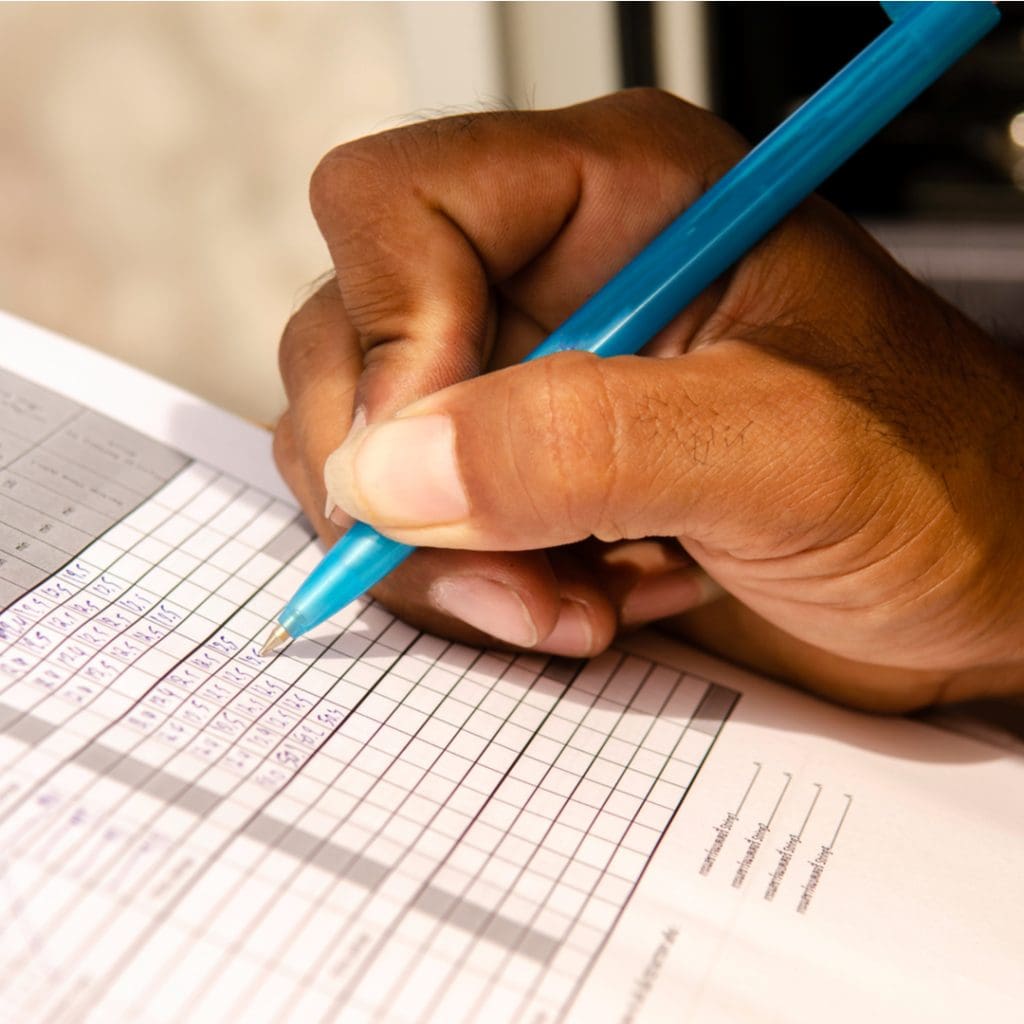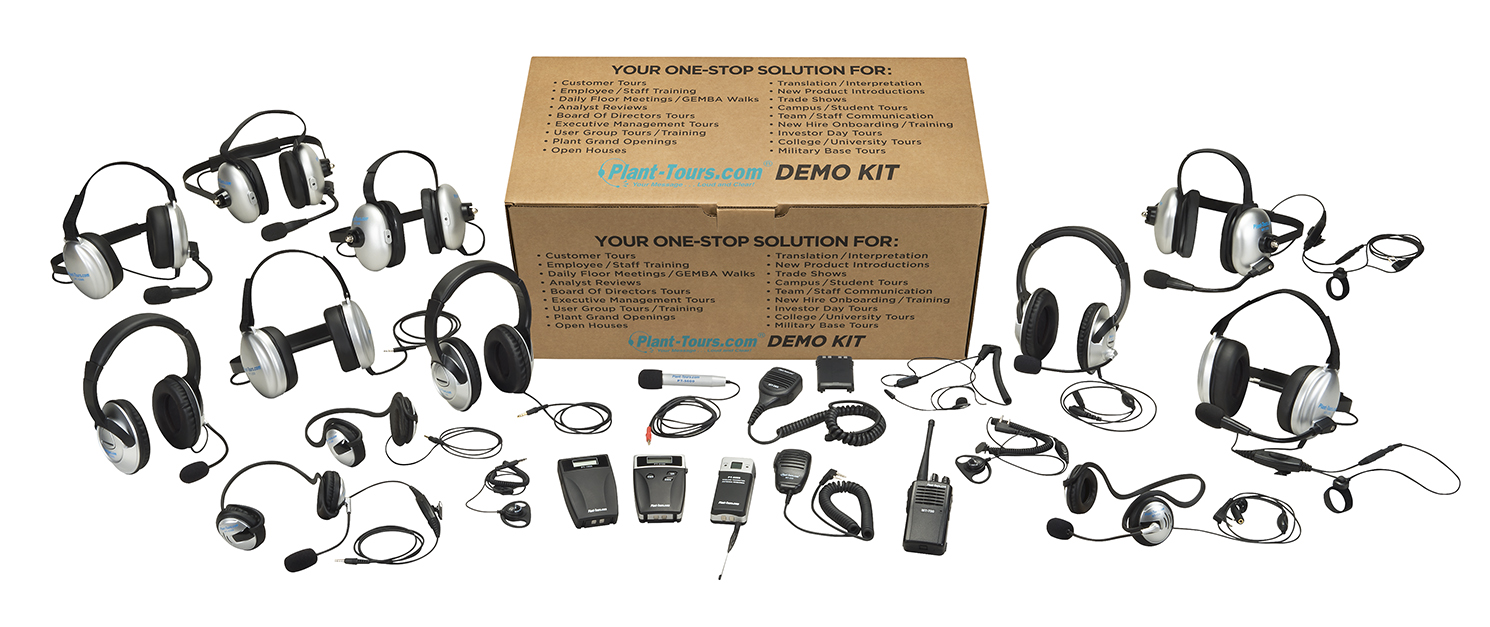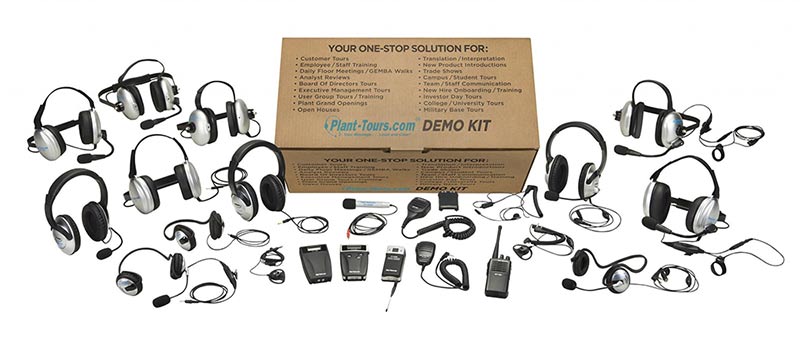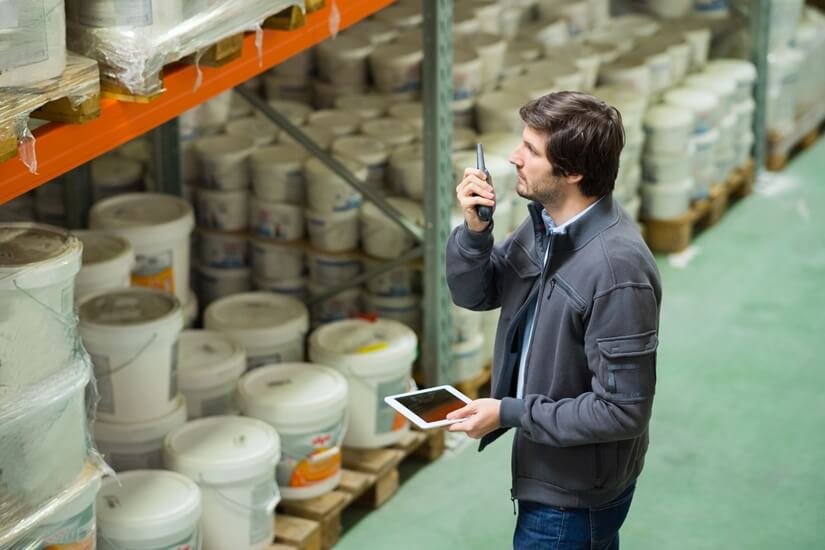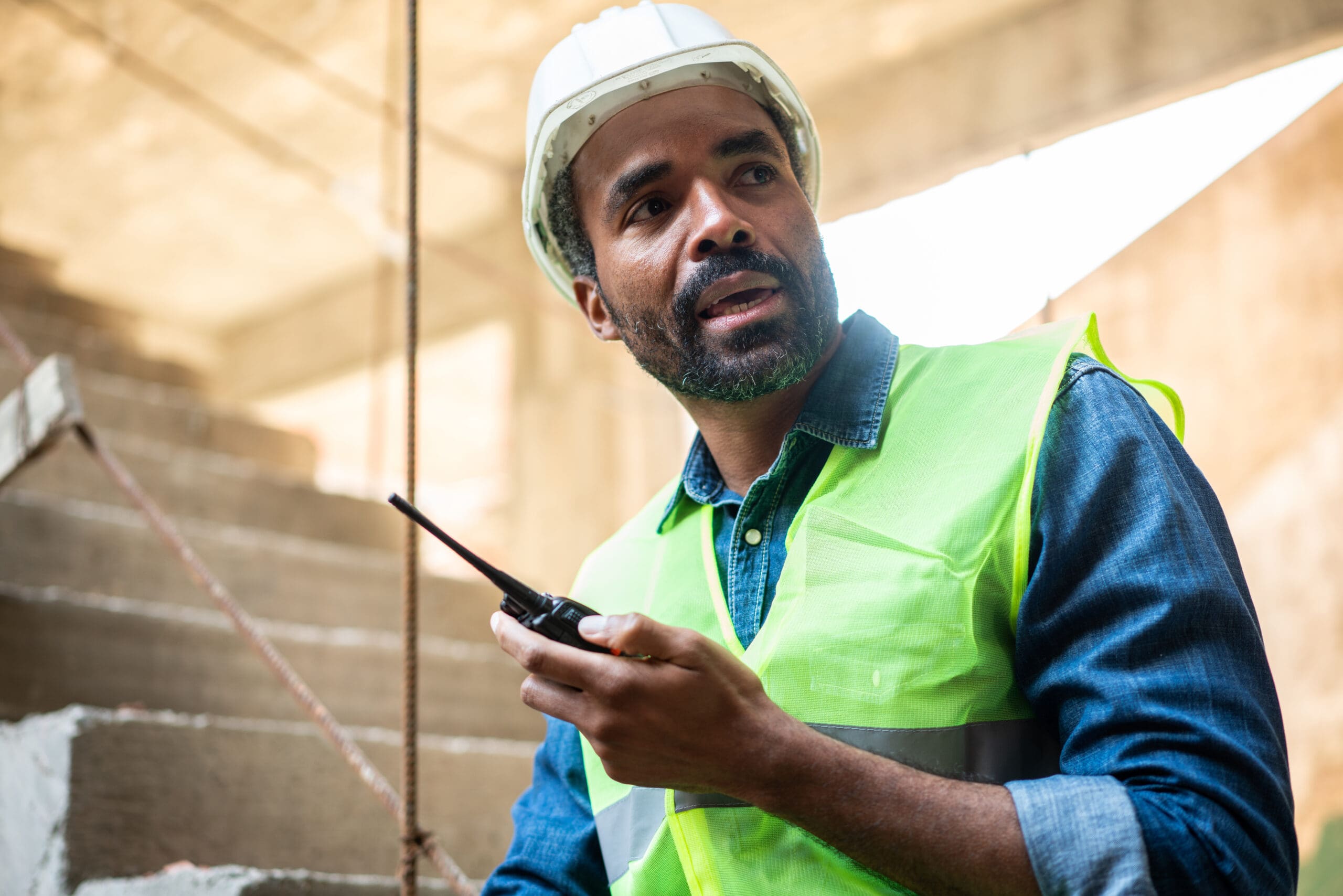In many industries, factory or plant tours are commonplace events. In fact, in some industries, a tour utilizing tour guide equipment occurs on a regular and sometimes daily basis. Think back to when you were a kid and touring the Hershey chocolate factory in Hershey, Pennsylvania.
However, most of the factories and facilities to which we supply tour guide equipment, either as a sale item or rental, don’t have such a delicious product that they manufacture. However, even our favorite items from manufacturing providers don’t just magically appear! Lots of hard work goes into creating quality standards that result in what customers get to enjoy. To achieve this, most manufacturers will host meetings, training and tours for internal visitors.
Advantages Of Using a Plant Tour Checklist
These events focus on improving product quality as well as continuous improvement in the manufacturing process, especially at ISO 9001 plants. A factory audit for quality control purposes is instrumental in developing corrective action for quality managers by identifying non-conformances in performance. These managers can use the audit checklist to develop work instructions for frontline employees to improve processes in manufacturing in creating quality products.
There are now easy to use apps that can help with creating these checklists, especially if this is the first time you are generating one. GMS HR audits and Iauditor’s safetyculture are checklist and inspection apps to prove compliance with the latest industry guidelines. Following a template like this will result in lower costs and better products which in turn increases customer satisfaction.
So in this article, besides providing you with a free Factory Tour Checklist, we will guide you on how to plan an effective plant tour.
If you’re only interested in the checklist, just scroll down to end of this page and feel free to download it.
Factory Tour Checklist – 4Ps
We’ve formulated our checklist based upon what we call the “4 Ps.” They are:
- Purpose
- Planning
- Preparation
- Presentation
And we’ll close the article with a step that many tour hosts omit: follow-up.
DETERMINE THE PURPOSE OF THE TOUR FIRST
There are a variety of reasons to conduct a plant or factory visit. They can range from investors interested in finding how their money is spent, to safety inspectors checking on plant operations to identify non-conformity and promote social compliance.
Common purposes for a plant tours:
- Product Inspection
- Quality Assurance
- Training Program (to update training records)
- New hire orientation and training
- Maintenance planning
- Lean operations development (gemba walks to sustain kaizen)
- Media coverage for public relations
- Consumer or customer interest
So, ask yourself some very simple questions:
- Why has this tour been scheduled?
- Who will be in attendance?
- What outcome are we anticipating from the plant tour?
- When is the tour scheduled, including time of day?
Once you’ve determined the purpose of the factory tour, you can begin the next phase: planning.
PLANNING IS VITAL FOR RUNNING A SUCCESSFUL TOUR
Now that you’re armed with the purpose, it’s time to make suitable plans for success. It’s easier when you know what needs to be accomplished. For example:
Does the tour need to visit every part of your facility? If there’s a specific purpose defined, you may find a better path, rather than touching on the necessities. A plant map helps in this planning.
Knowing what areas the tour will visit helps determine whether PPE (personal protective equipment) must be supplied to the attendees.
If the tour is more of a fact-finding visit, how will attendees interact with the tour guide? It might mean that you need to choose between one-way or two-way tour guide equipment.
Who best knows the area to be toured? Finding the right guide or guides is essential to a successful plant tour… and satisfied attendees.
These questions, along with understanding who will be attending and their purpose for visiting will help you plan a successful tour.
Now, you’re ready for preparations that will ensure a good experience.
PREPARATION ENSURES A SUCCESSFUL TOUR
As the saying goes, you never get a second chance to make a good first impression. You want to make sure everything looks good and the tour is run as efficiently as possible.
Make sure the grounds around the facility look their best. Here’s a little tip: If the lawn needs to be mowed or shrubbery must be trimmed, try to get this done at least a day or two in advance. This gives plenty of time to get grass clippings and other debris cleared from sidewalks and paths.
Clean The Production Area
In addition to the facility grounds, the production area must be cleaned and organized for the event. Incoming materials such as the raw materials used in the production line need to be neatly stored near where production processes take place or in storage areas.
prepare for the arrival of guests
If you have a location that the attendees will gather before the tour, make sure it’s clean and ready for them. This could include tables for ID tags, tour guide headset systems, snacks, and more.
Here’s something most won’t mention. If your attendees are coming in from distant locations, particularly by tour bus, make sure your restrooms are clean. That might be the first thing they want to see!
TOUR GUIDE EQUIPMENT FOR YOUR TOUR
Make sure you have the proper tour guide equipment for the tour. Your guests want to hear your message, loud and clear! If you don’t conduct regularly scheduled tours, consider a Tour Guide System rental.
Make sure it fits the purpose of the tour. You might want to get a demo kit with various options. That way you can choose the proper equipment for the event, including a tour guide microphone system. A tour guide rental system can include both one-way and two-way systems, as well as configurations for other needs, such as integration with any PPE that may be required. The staff at Plant-Tours.com can help you find the best option, whether a purchase or a rental, to fit your needs.
Speaking of tour guide equipment, make sure it’s functioning properly before the event takes place. Hunting for working headsets is not conducive for a good experience right before the event. That’s one reason we send our Service Representatives to your tour event. They help make sure everything’s set up and running smoothly.
Are there any brochures or other documentation needed? If so, make sure you have adequate quantities available for all attendees.
Finally, relax! If you’ve got everything done ahead of time, you can feel good about your opportunity to showcase your factory or facility. And a relaxed host is a more effective host.
Then… the time arrives and you’re ready for the final P: Presentation.
PRESENTATION IS WHERE IT ALL COMES TOGETHER
As mentioned, you only get one chance to make a good impression. So make sure you have team members greet your guests at the door. For larger groups, you may need several to ensure that attendees are made comfortable and welcome.
In bad weather, attendees may need help with coats and other outer garments. Anything you do above and beyond the norm impresses your guests. If you’ve secured coat racks or have a coat room, make sure the attendees can find them quickly.
Your tour guide should explain how the tour will progress. When you’re ready to begin the actual tour, have enough help to get the audio tour guide equipment handed out and working. For large events, Plant-Tours.com provides the expert reps to do all this for you.
That’s why it’s so important that we often send our own company reps to assist, particularly with our tour guide system rental customers. Getting your message across and encouraging attendee participation in the discussion is vital for success.
Make sure your tour guide is prepared to answer questions. However, this is one time where people working in the areas toured can help. No one knows the operations better than the person performing the work. Tap that valuable resource whenever possible.
For them, it may be enough to have a spare headset available with a hand-held microphone. Above all, make sure your attendees are satisfied with their tour, getting their important questions answered.
DON’T FORGET THE FOLLOW-UP
Once the tour is over, you’re still not done. Following up with attendees is a personal touch that we recommend you implement in your factory tour checklist. Something as simple as a hand written postcard makes a lasting impression.
In the case of investors, it’s one more touch point for ensuring a successful and profitable outcome. It will also help build a successful relationship with potential suppliers which can help supply chain sourcing efforts. Lowering the cost of goods, especially costs from importers, will help profits over the long term.
It also gives you the chance for feedback. In some cases, this can be used to help promote your facility in the media and improve future tours. And always remember… good press, including posts on social media, can be beneficial to your facility in the long run.
Perform an Internal Audit of the tour
Finally, an internal audit of the tour/event will allow you to reflect on what went well and what could be improved at future events. For example if the event involved EH&S managers gathering at a factory site to do a safety & quality audit of manufacturing processes, the organizer of the event should schedule a post event review. By involving other organizers, managers and participants there will be a wide perspective of what went well and what didn’t go well in the audit report. Feedback regarding how the quality audit checklist was created, the auditing itself and the proposed quality management system could reveal best practices and future opportunities for upcoming events.
Whatever the frequency or needs of your tours, get the right tour guide equipment that’s suitable and proven to make your event successful. If it’s your first time, consider a tour guide system rental, along with a demo kit, to get the best possible equipment for your location. Here at Plant Tours, we offer top notch headsets and communication equipment that ensures your tour goes off without a hitch! Contact us today and find the tools you need to complete your plant tours checklist.
Make sure your message comes across… loud and clear!
